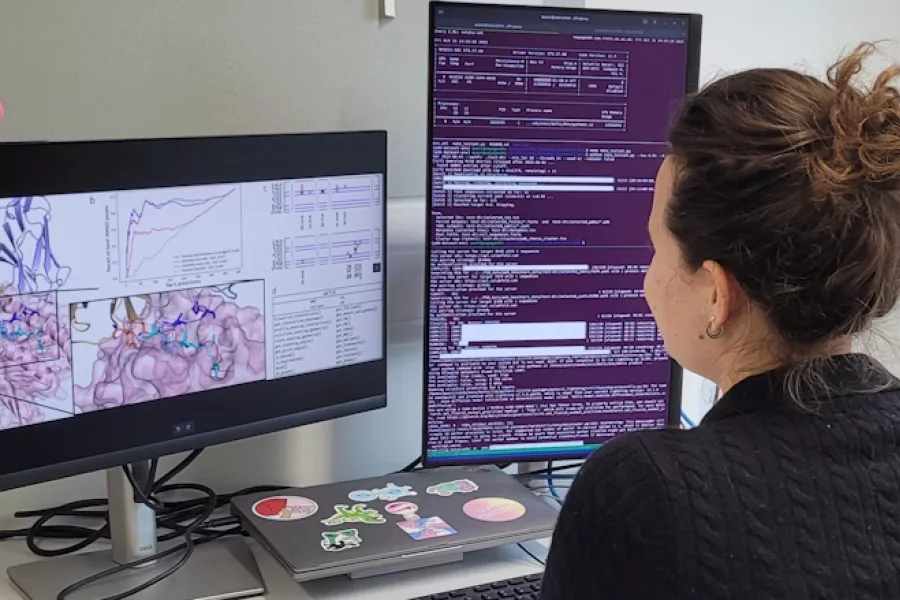A new software package from the Oxford Protein Informatics Group (OPIG) at the Department of Statistics tackles a longstanding bottleneck in immunotherapy research. STCRpy offers an out-of-the-box solution for scientists to analyse thousands of T-cell receptor structures quickly and consistently.
T-cell receptors are a key component of the adaptive immune system that recognise fragments of non-self ‘antigens’ presented on the surface of cells, and trigger immune responses against these cells. Understanding how T-cell receptors bind their targets is key to the rational design of new immunotherapies. Advances in structure prediction, such as AlphaFold, mean we are getting ever closer to reliable predictions of the 3D structures of these receptors with or without an antigen, but analysing the resulting coordinate data, particularly at scale, has remained a considerable challenge.
‘Compared to sequence data, working with structure data is complex and laborious, especially for T-cell receptors and antibodies, because so much software is designed for general proteins,’ said Nele Quast, the study’s lead author. ‘STCRpy removes that barrier to entry and will hopefully make working with T-cell receptor structures easier and more common.’
STCRpy combines several essential functions in one toolkit: it reads and writes structural data files, identifies receptor and antigen chains, maps molecular interactions, and measures binding geometry.
The ability to measure the binding geometry of the T cell receptor consistently and accurately is especially important. In order to signal to the immune system, T-cell receptors must coordinate with other cell surface proteins, and only certain relative orientations to the antigen are compatible. The authors therefore combined three geometric properties (crossing angle, tilt, and distance) into a single feature that captures how T-cell receptors capable of downstream signalling typically engage their target.
To illustrate its value, the researchers applied the feature as a scoring measure to rank the accuracy of 2,000 3D structure predictions of how a T-cell receptor, known both to bind a fragment linked to several cancers and to destroy cells expressing this target, engages its antigen. Comparing to the previously solved structure of the complex, and using the AUC-ROC metric (where higher values indicate better ranking of more correct predictions), traditional scoring functions achieved a value of 0.63. STCRpy’s geometry-based scoring reached 0.84, a substantial improvement. Combining approaches further improved identification of the most accurate structure predictions.
'Recent benchmarks demonstrate that methods that leverage 3D structure are the state-of-the-art at predicting T-cell receptor specificity', said Dr Matthew Raybould, last author on the work. 'STCRpy will make it easier than ever to sanity check our predictions, and reducing the noise introduced by implausible guesses should mean structural reasoning will help even more for this critical task.'
By releasing STCRpy as open source, the researchers hope to make structural immunology more accessible and reproducible, encouraging collaboration across the field. The software runs on Linux and macOS and is available with full documentation at github.com/oxpig/STCRpy.
The paper, STCRpy: a software suite for T-cell receptor structure parsing, interaction profiling and machine learning dataset preparation, has been published in Bioinformatics.



